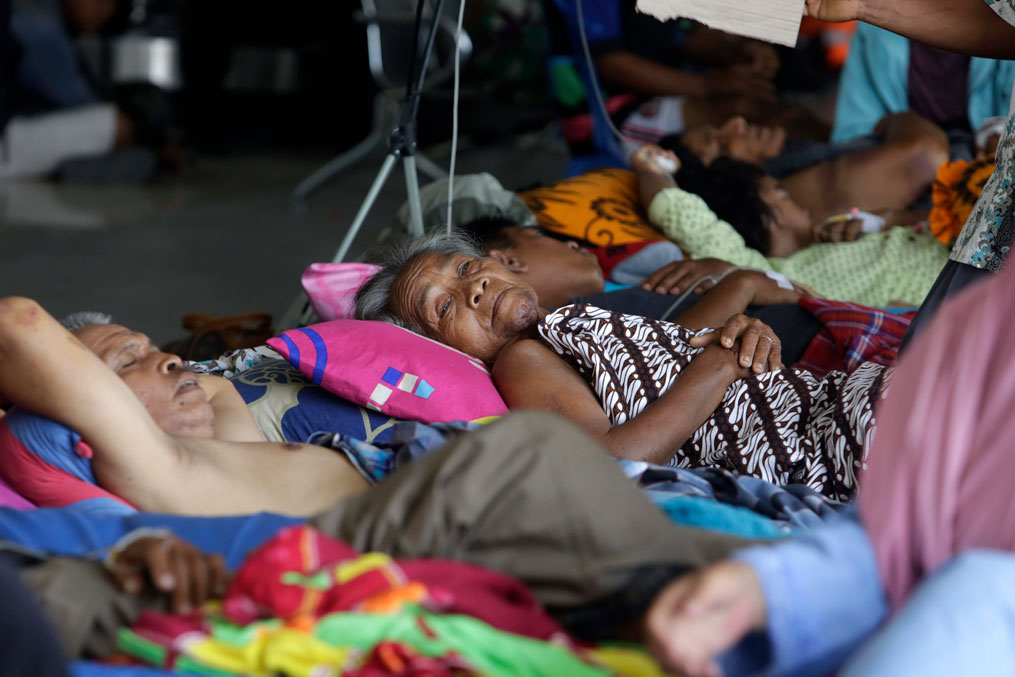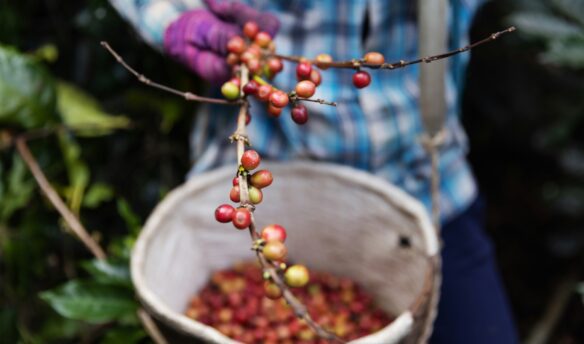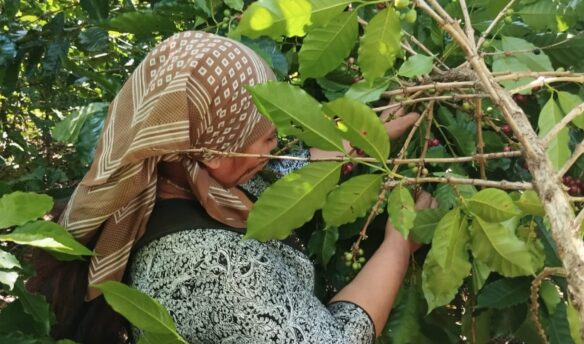Patients are being treated outside of a damaged health facility in Palu.
World Health Organization
[O]n September 28, a 7.7 magnitude earthquake triggering a tsunami, aftershocks, landslides, and liquefaction, hit the central coast of Sulawesi, Indonesia. The coastal cities of Palu and Donggala were the most severely affected. In the month since the earthquake hit, more than 2,100 people have died, 4,600 have severe injuries, and nearly 700 people are still missing. According to a Situation Report published by the World Health Organization, more than 85,000 people have been displaced from their homes and are living in temporary camps.
Liquefaction, a phenomenon where water-saturated soil loses its ability to hold structure, has been blamed for much of the destruction throughout Palu. Entire neighborhoods of the city were engulfed by mud from the liquefaction, taking people, homes, roads, and bridges with it.
Palu served as a metropolitan hub for Sulawesi’s coffee and cocoa farmers. The city’s hospitals, schools, government facilities, and ports are the only option for many rural farmers throughout the province.
“The main road is heavily damaged, which makes any activity far from normal. The farmer cannot go to market and the harvest transportation are hindered,” explains Subkhi Hestiawan, a Rainforest Alliance Cocoa Program Associate in Indonesia. “It is [a] hard time for coffee farmers who are supposed to enjoy harvest month in October.”
Hestiawan also points out that commodities companies that operate in Palu, including Cargill, Elam, and Ecom-TMCI, have had to stop operations there, leaving farmers with no way to sell their crops this year.
“This year’s harvest, especially coffee and cocoa, will be affected due to unharvested fruit at harvest time and uncertain climate problems,” he says. “Most problems come from halting cocoa and coffee trading-business activity. We estimate it will take at least two years to make activities back to normal.”
Many farmers themselves are displaced and mourning the loss of their own friends and family who were in the city at the time.
“Currently, a lot of people are in fear and prefer to stay at the rescue camps rather than going back to their homes as tremors are still happening,” says Thirza Khoe, a coffee importer with Zenith Coffee International and Indonesian native. “They are also at the state of grieving and coming to term, realizing that they would never see their loved ones again—those who were lost during the tsunami.”
Relief efforts are now focused on providing shelter to those displaced, and on mitigating disease. The UN Refugee Agency (UNHCR) delivered 435 tents to Sulawesi government officials, and plans to donate an additional 1,305 tents within the next few days. The Indonesian Ministry of Health is starting a disinfection campaign in Palu, Donggala, and Sigi District, including fogging refugee camps, spraying liquefaction areas, and disinfecting hospitals.
“The government is now prioritizing emergency response, and recovery for more lifesaving,” says Hestiawan. “The agriculture sector infrastructure are not yet priorities.”
Hestiawan lays out four key ways that the global coffee industry can help Sulawesi’s coffee and cocoa farmers recover:
• Support data assessment to determine how many farmers are affected.
• Support short term livelihood strategies, such as short term planting.
• Support long term programs for replanting the devastated coffee and cacao plants.
• Encourage the global industry to recover trading facilities in Palu.
To learn more about relief efforts, or to donate, visit the UN Refugee Agency website.
Fresh Cup will continue to report on developments in Indonesia.
















